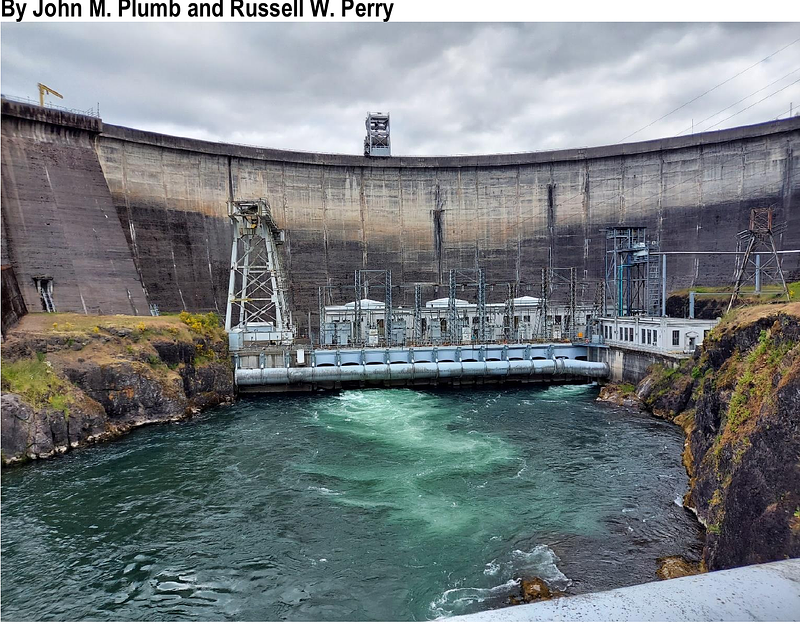Development of a Two-Stage Life Cycle Model to Inform the Trap and Haul Program for Coho Salmon in the Lewis River, Washington

Development of a Two-Stage Life Cycle Model to Inform the Trap and Haul Program for Coho Salmon in the Lewis River, Washington
Perry, R. W.; Plumb, J. M.
AbstractRestoration of salmon populations in the upper Lewis River Basin depends on a trap-and-haul program owing to the Lewis River Hydroelectric Project (Project) operated by PacifiCorp and Cowlitz PUD (Utilities), which has been a barrier to salmon passage since the 1930s. Thus, sustaining the Coho salmon (Oncorhynchus kisutch) population upstream of the Project currently depends on two fundamental factors: (1) the collection of upstream migrating adult Coho salmon at Merwin Dam, the lower most dam within the Project, and transporting them by truck to spawn above Swift Dam, the upper most dam within the Project; and (2) the collection of out-migrating juvenile Coho salmon at the downstream collection facility at Swift Dam for transport and release below the Project. The reintroduction program began once the downstream collection facility at Swift Dam was commissioned in late-2012 with the first year of transport data being collected in 2013. Over the past decade, the Utilities have been collecting data on juvenile outmigrants and adult fish returns at the dams. The need to construct a life cycle model for Lewis River anadromous fish was identified by the Lewis River Aquatic Technical Subgroup, with the understanding that many years (>15) of data collection are needed to adequately measure the life cycle production of coho salmon. Use of past data to construct models could help inform future data collection and provide a framework that can be updated annually to measure trap and haul program performance within a life cycle context (Note: Data are not currently available from PacifiCorp. Contact organization Chris Karchesky for further information). Because Coho salmon can live as long as five years, estimating demographic parameters for Coho salmon populations over their life cycle requires at least 10 or more years of data collection. Over the past decade, PacifiCorp has been collecting data on fish collection efficiency and the numbers of adult and juvenile salmon transported around the Lewis River dams, providing sufficient data to formulate a life cycle model that can guide future data collection efforts and provide preliminary information to resource managers The goal of the statistical life cycle model was to estimate annual production and survival during two critical life-stage transitions (1) the freshwater production from escapement of adults released upstream of Swift Dam, and the collection of downstream migrating juveniles at the passage facility at Swift Dam, and (2) the smolt-to-adult survival from the time of collection at Swift Dam to their return as adults. We used the Beverton-Holt stock-recruitment model to estimate juvenile production from the number of spawners. This approach allowed us to test for density dependence at current spawner abundances while estimating annual productivity, defined as the number of juveniles produced per spawner at low spawner abundance. Productivity was then expressed as a function of the number of juveniles collected and transported downstream of the Project. Because juvenile Fish Collection Efficiency (FCE) directly affects the number of juveniles that survive to continue downstream migration, FCE is a primary determinant of fish production. Consequently, the modeling framework is well suited to evaluate the performance of trap and haul programs within a life cycle context. The objectives of this study were to: (1) gather and collate available data on adult and juvenile Coho salmon at Merwin and Swift dams, (2) quantify adult escapement, juvenile abundance, and the age at outmigration and adult return, (3) describe, formulate, and fit the integrated population model (IPM) to the data, and (4) summarize our findings, identify data gaps, and identify potential opportunities for future studies that could provide information used to improve model estimation and inference. Our key findings were: (1) over and above the number of spawning females, FCE was the primary factor affecting productivity of Coho salmon above Swift Dam, (2) smolt-to-adult return (SAR) rates were relatively high considering that harvest was included in the estimate, averaging about 4.5% and ranging as high as 12.9%, and (3) juvenile capacity upriver of Swift Dam was difficult to estimate due to the limited range in spawning females over the time series of data, suggesting the model may be improved by collecting data at higher spawner abundances. In addition, by including FCE in the model, we estimated that the median pre-collection productivity, defined as the number of juveniles produced per spawner when FCE = 1, was 64 juveniles per spawner. Because this two-stage life cycle model partitions factors that affect fish production in river versus the ocean, the model estimates should help inform fishery managers about the overall role that fish collection at Swift Dam plays in the recovery and sustainability of Lewis River Coho salmon. By providing the model with (1) more years of data, (2) higher numbers of spawning females, and (3) data on age at juvenile migration in relation to age at adult return greater certainty in the estimates of capacity and SAR can be attained. Ultimately, information provided by the model can assist in the evaluation and continued improvement of the current trap and haul program to support anadromous fishes in the Lewis River Basin.